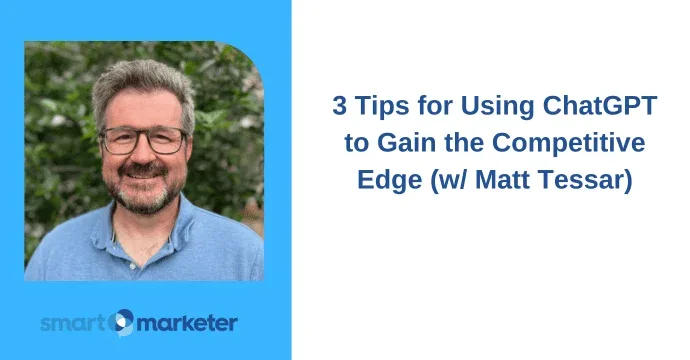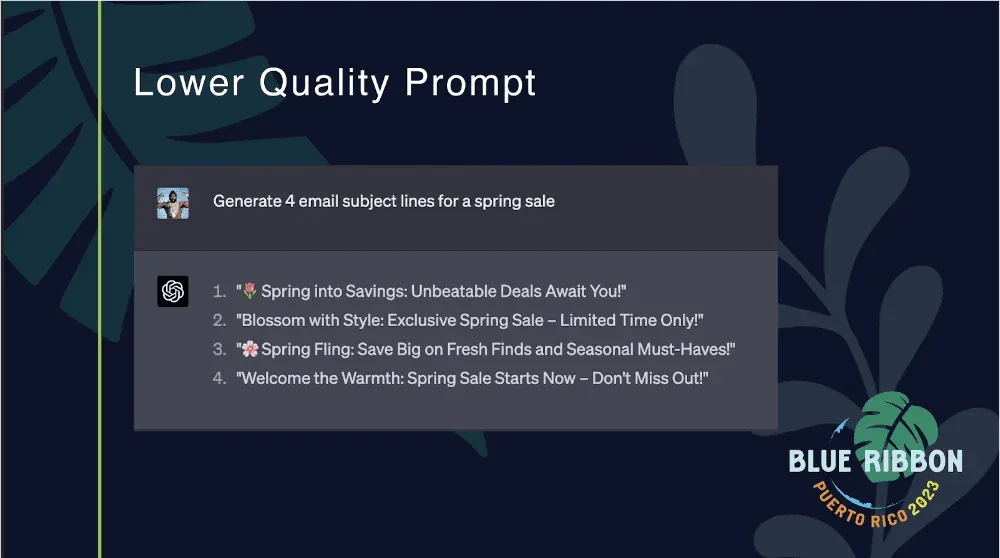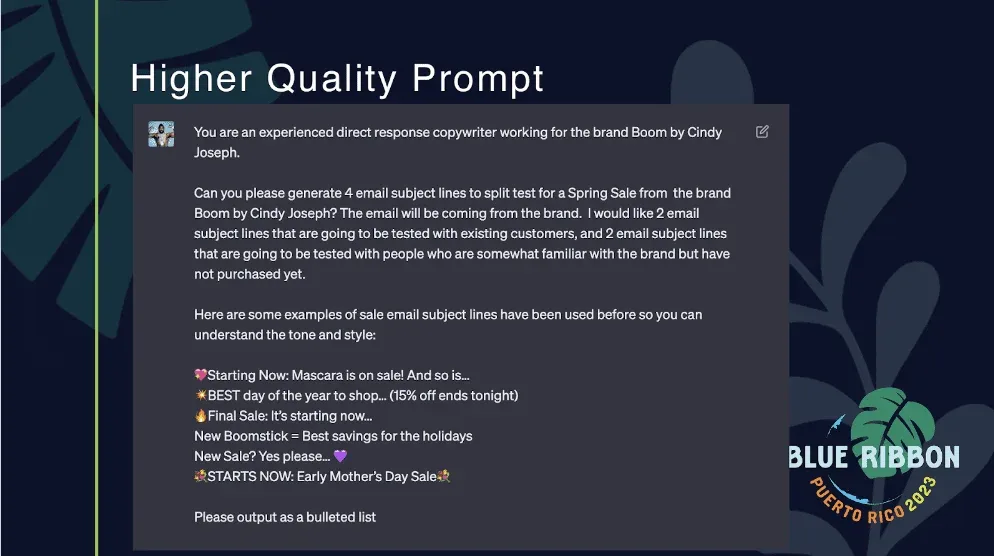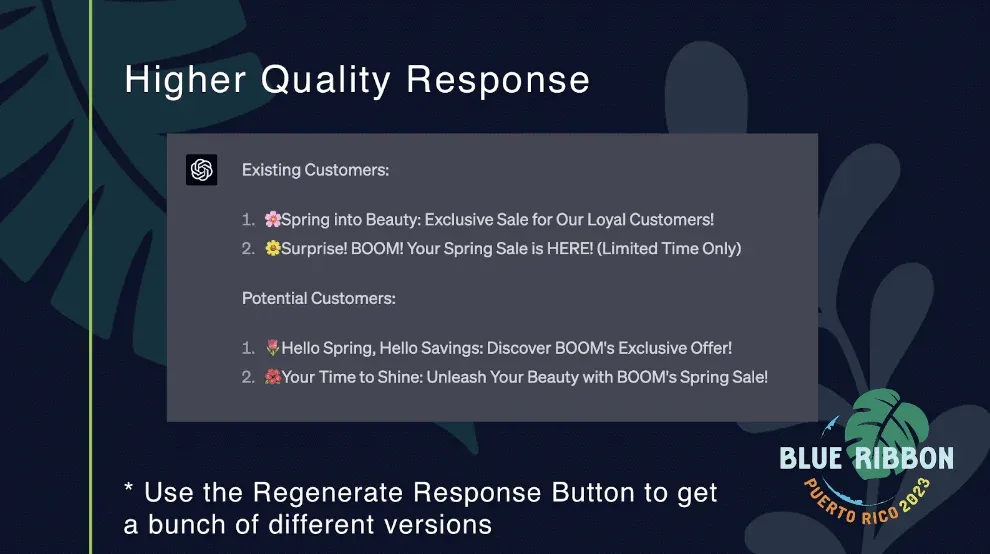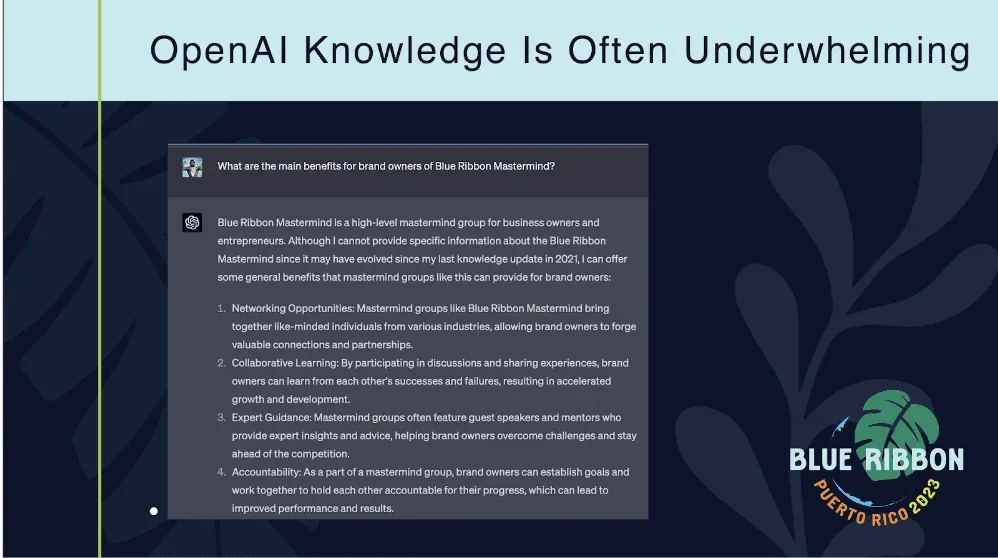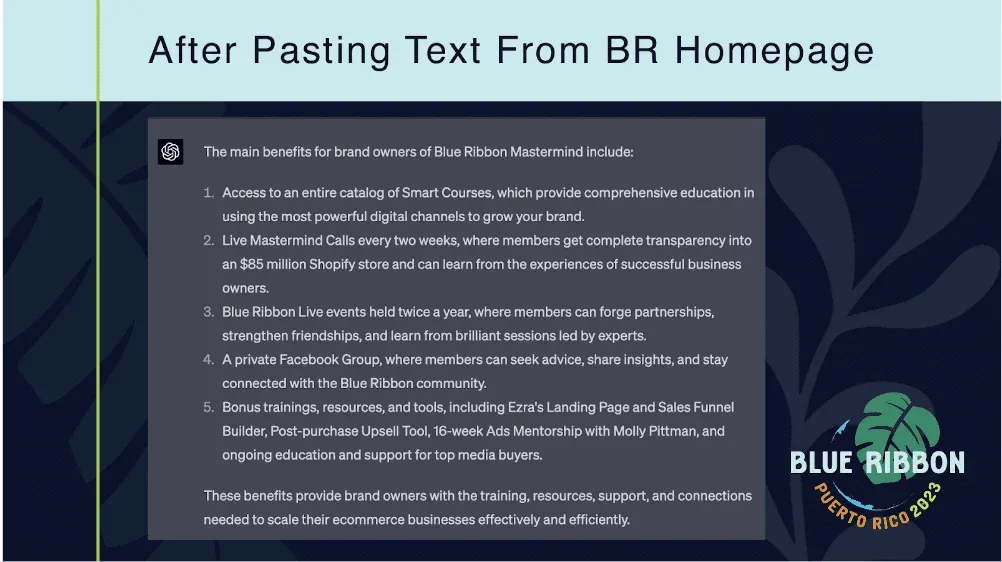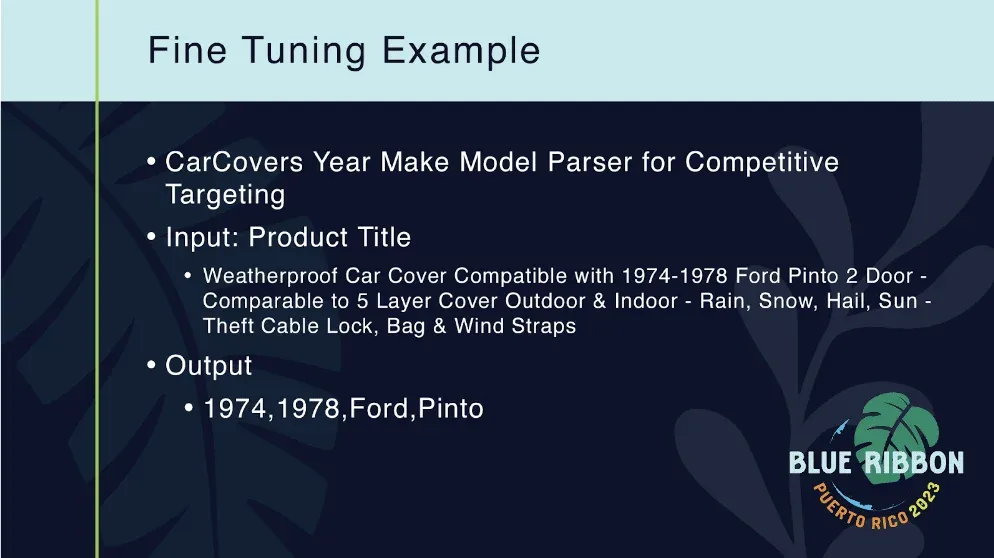No, you’re not seeing things.
AI.
Is.
Everywhere.
Many marketers I’ve talked to see artificial intelligence as a threat to their livelihoods—a “robots-are-taking-over-our-jobs-just-you-watch” mentality.
But while fear is a natural response to something new and unknown, let me caution you:
Resist the urge to run from AI.
It might be scary to think about how far technology has come in recent history, but it’s far more productive to embrace AI in a helpful “Rosie” from the Jetsons way, instead of the destructive “T-1000” from the Terminator way.
When used properly, AI can be a helpful tool for your business. You can use it as a productivity booster for tasks like copywriting, coding, and even competitive analysis.
To illustrate my point, I want to introduce you to Matt Tessar.
Matt is the Co-Founder and Chief Technology Officer of TESMO, a digital marketing agency that’s managed about $500 million in Amazon sales for direct-to-consumer (D2C) and third-party (3P) brands.
In Matt’s private session from Blue Ribbon Mastermind, he discussed what you need to know about building a sustainable competitive advantage for your brand with AI.
Now, we’ve taken Matt’s session out of the private vault and turned it into this quick article for you to enjoy.
But first…
LET’S GET CLEAR ON WHAT AI IS
In this article, we’ll focus on a specific kind of artificial intelligence—GPT, which stands for “generative pre-trained transformer.”
This type of machine learning takes a piece of content and turns it into another. You can also use GPT to create images, audio, video, simulations, and even web code. But the most common use case for this technology is the one you’ve seen all over the press:
OpenAI’s ChatGPT—a model that can organize, summarize, and create new text with astounding accuracy based on prompts you give it.
To create this AI system, data scientists took massive amounts of information already on the internet and fed it through machine learning models—what’s called “unsupervised learning.”
Imagine thousands of libraries with more texts than any human could possibly go through in a lifetime, along with advanced language processing models that can “read” the data. Then, we can train AI systems to perform the task we need it to.
And with every interaction with these learning models (i.e., the more data they are given), the better they become at helping people perform tasks.
Now that you know a little about GPT’s history, we can move on to the crux of Matt’s presentation.
HOW TO ENLIST GENERATIVE AI TO GET AHEAD OF YOUR COMPETITORS
As I mentioned above, when you acknowledge that AI isn’t going anywhere, you can finally embrace all the incredible ways GPT can advance your business.
Here are 3 tips from Matt’s session to ensure your business gets the most (and best) from generative AI.
#1 WRITE HIGH-QUALITY, STRUCTURED PROMPTS
GPT knows a lot of things, but it doesn’t know everything. It’s like a smart-but-inexperienced employee you have to train.
That’s where a human must give it the content that it needs—and the specificity of the instructions you give matters a lot. Just like if you were to give an employee half-baked, disorganized directions for a project, without direction and details the output you get is unlikely to hit the mark.
AI is no different. When you get lackluster results from GPT, take it as a sign that you need to put in more effort to tell it what you need.
Here’s an example of a low-quality prompt:
“Give me four email subject lines for a spring sale.”
Those directions say nothing about my brand, or even what kind of sale it is. The subject lines ChatGPT came up with are fine, but they could be from any company. We want subject lines that are more persuasive, more enticing, more on-brand.
Below is a higher-quality prompt with a framework that provides additional context and background:
Instead of simply asking for email subject lines for a spring sale, the prompt also includes:
- The name of the brand
- Information about two kinds of audiences
- Some past examples of subject lines
- And a request for a bulleted list
So it’s no surprise that this prompt generates a higher quality response:
These subject lines are a much better jumping-off point for a copywriter. They aren’t perfect, but GPT can get you there farther and faster than a blinking cursor ever could.
What you put in determines what you get out of these systems. Don’t assume that the AI knows what you’re talking about. Tell it exactly what you want, how you want it, and examples of what you expect, and then go from there.
Now, how can you make the output more accurate and relevant?
#2 PROVIDE EVEN MORE CONTENT AND INFORMATION
As I mentioned above, the more we interact with AI, the better it learns.
So, could you paste a whole bunch of stuff into ChatGPT and then ask a question at the bottom?
Absolutely! That’s the best way to do it. Because if you don’t, the computer will just make stuff up based on the limited information it has. The more information you give it up front, the better the output will be.
For example, if I ask “What is the main benefit to brand owners of Blue Ribbon Mastermind?” I’ll get a generic response. I assumed the computer has all the information it needs about the community—which it may or may not.
But if I paste in text from our homepage and ask it exactly the same question, I give the computer more of what it needs to know. Then, it can provide a more accurate summary of benefits for this specific group compared to other masterminds:
And these are just a few examples of what you can do with AI.
You can also input the text from your reviews, tell GPT to pretend it’s your avatar and ask it what it thinks about your website. It can do sentiment analysis, find opportunities for improvement, and even diagnose common problems.
You can also do this on your competitors’ products! Paste the text from your competitor’s website, paste the text from your site, and give GPT an incredibly detailed question.
Now, for the pure gold of Matt’s session: how to use AI to give your business a competitive advantage.
#3 CREATE CUSTOM AI MODELS WITH PROPRIETARY DATA
Now you know how to get meaningful data from AI, but how can you teach AI to do something in a repeatable way?
Fine-tuning allows you to train OpenAI with a set of inputs and outputs—think hundreds, even thousands of data examples you plug into the prompt. In this way, it learns the transformation you want and can apply it to data it’s never seen.
Like, for example, extremely relevant competitive product targeting.
Let’s say you’re a DTC brand selling car covers on Amazon. Your brand offers 80,000 vehicle-specific SKUs and you’re targeting with keywords based on the vehicle’s year, make, and model. But there are hundreds of thousands of competitor products on Amazon that don’t include the exact years, makes, and models.
Could we teach AI to extract the year, make, and model of a vehicle from an Amazon product title, and then use that data to target relevant competitor products?
Yes!
In his presentation, Matt used a system called Trudo.AI to fine-tune his model without code. To do this, he uploaded a CSV file containing columns of inputs and outputs—around 2,000 examples fed into the parser from the vehicle cover product catalog.
Take this incredibly-detailed input, and the specific keyword output the AI can extract for competitive targeting:
If there are any mistakes, you can show it what it did wrong and continue to fine-tune.
Another example of using proprietary data and fine-tuning the results is teaching GPT how to write your emails.
You can input multiple bullet-pointed summaries of your best-performing emails and include an extremely detailed, structured prompt for the kind of output email you are looking for. GPT will learn about your products from reading through those bullets, and the output is an email in your brand voice.
Need more details? Tweak your prompt.
You can also upload additional email examples to keep training until you get what you want.
The last example I wanted to pull from Matt’s presentation is how you can train AI to assist your support team.
For instance, you could input your entire website, blogs, and help articles. Then, write a highly detailed prompt, such as:
“Pretend you’re a customer service rep at [your company name], and write a friendly response to this question from a customer that’s no longer than 150 words, and be sure to include this discount code [your discount code] for their next order: [customer question].”
For repeat questions from other customers, you can use the regenerate button to get slightly different alternative outputs. GPT will write it in a way that’s consistent with your voice because it’s learned about your brand.
In conclusion…
YOU CAN USE AI TO GET AHEAD OF YOUR COMPETITORS
When you DO IT RIGHT.
AI is moving incredibly fast. In the last year alone, it’s come an incredibly long way and it’s gonna keep going. GPT tools can make it easy for you, but they can’t do all the work for you.
Think about the way you’re engaging with these platforms and the content you’re providing. Write structured high-quality prompts, give it more content and information than it needs, and figure out ways that you can create custom models with your business data.
And when you start getting really good at using GPT…
Buckle up.
Because the future of AI for business is only going to get more interesting.

